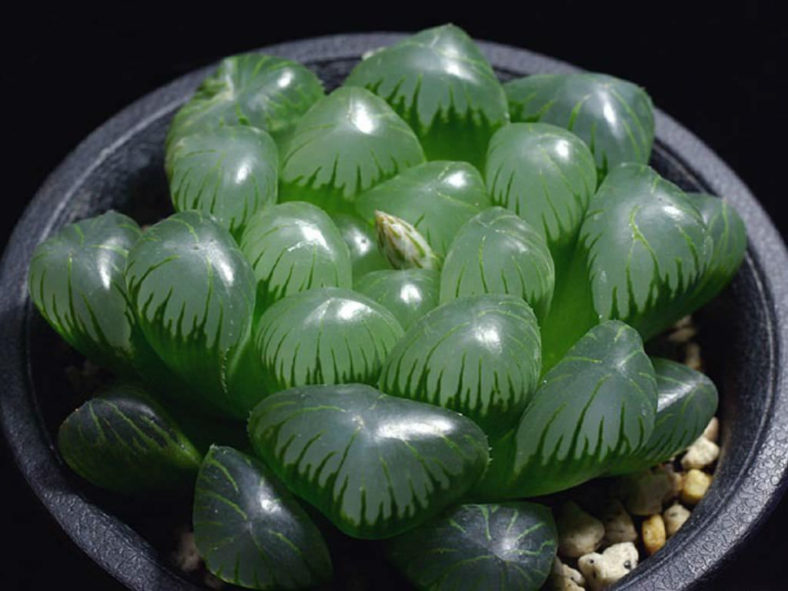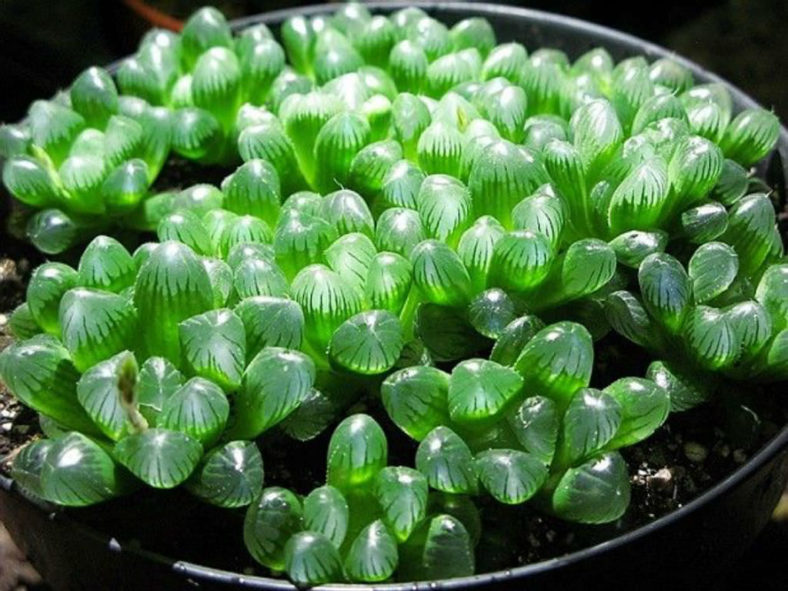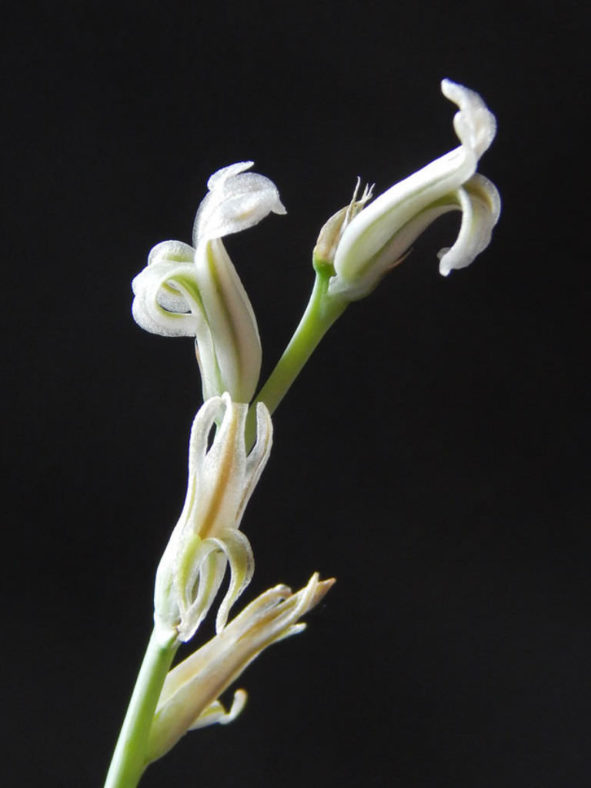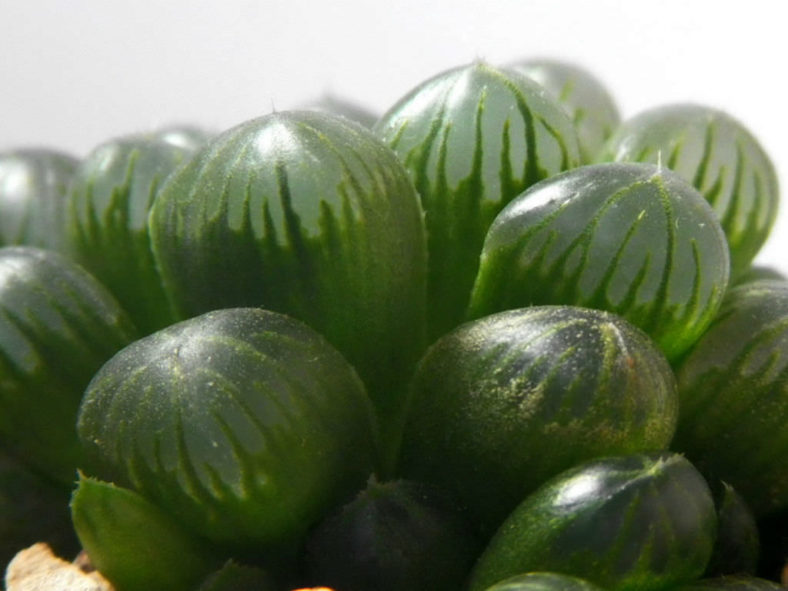Scientific Name
Haworthia cooperi var. truncata (H.Jacobsen) M.B.Bayer
Synonym(s)
Haworthia ikra, Haworthia obtusa f. truncata
Scientific Classification
Family: Asphodelaceae
Subfamily: Asphodeloideae
Tribe: Aloeae
Genus: Haworthia
Etymology
The varietal epithet "truncata" (pronounced "trunk-AH-tuh") means "maimed, mutilated." It refers to the leaves of this variety, which have blunt tips that create the appearance of being cut off. In contrast, the leaves of Haworthia cooperi var. cooperi are pointed.
Origin
Haworthia cooperi var. truncata is native to South Africa. It occurs north of East London in the Eastern Cape province.
Description
Haworthia cooperi var. truncata is a beautiful succulent that forms small rosettes of glossy, round-tipped leaves with lovely blue-green translucent patterns at the tips. It's a very quickly offsetting and smaller-growing variety of Haworthia cooperi, creating small colonies that can reach a diameter of 3 inches (7.5 cm). The rosettes have 20 to 25 leaves and resemble a small grape cluster. The leaves become reddish when exposed to intense sunlight or not enough water.
The whitish flowers appear from spring to summer on simple stalks that can grow up to 12 inches (30 cm) long.

Hardiness
USDA hardiness zones 10a to 11b: from 30°F (-1.1°C) to 50°F (10°C).
How to Grow and Care
These succulents are not considered difficult to grow as houseplants. If you can keep a pot of Aloe alive on a windowsill, chances are you can do the same with a dish of Haworthia. As with all succulents, the most common issue is overwatering. They should never be allowed to sit in water under any circumstances. At the same time, these small decorative plants can be grown in interesting containers such as teacups and even miniature baby shoes. If you're given a Haworthia in such a container, ensure the container has adequate drainage.
Haworthias are small, usually between 3 and 5 inches (7.5 cm and 12.5 cm) in height, and relatively slow-growing. Therefore, they are often grown in small clusters in wide, shallow dishes. Over time, clusters will naturally enlarge as the mother plant sends off small plantlets. When the cluster has outgrown its dish, repot into a new wide and shallow dish with fresh potting soil in the spring or early summer. This is also the time to take offsets for propagation.
See more at How to Grow and Care for Haworthia.
Links
- Back to genus Haworthia
- Succupedia: Browse succulents by Scientific Name, Common Name, Genus, Family, USDA Hardiness Zone, Origin, or cacti by Genus
Photo Gallery
Click on a photo to see a larger version.


